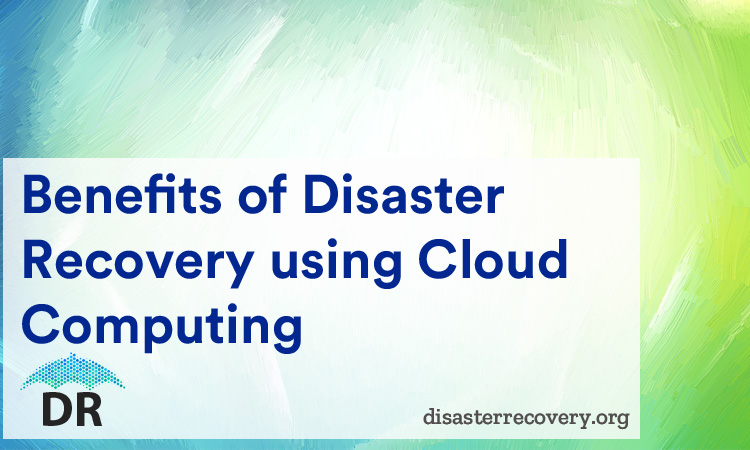Disasters can strike a business any time and complacency in this regards could prove disastrous. It is a catch 22 situation for an IT Manager. The upfront expense of setting up a Disaster Recovery plan without an immediate benefit usually bring a modicum of resistance from management. However, if a case is made for the need for being prepared and the benefits in case of a disaster, most organizations choose the path of being prepared. Hosting the DR program in the cloud has many benefits and the most important among them are:
Benefits of Disaster Recovery Using Cloud Computing

- Disks, back-up tapes etc. can be eliminated – There is no need to maintain daily back-ups using disks, tapes etc. Though this mode can be used, compared to having a DR in the cloud, it is inefficient. The data back-up can be done, even in real-time in the cloud.
- Mission-critical data can be kept off-site – Since the cloud is in a remote geographical location, in the event the production center is destroyed fully or partially, data can be recovered and production restarted within the stipulated recovery parameters. It should be remembered, some natural disasters can have a wide impact geographically and if there is an off-site production center and if it is geographically in the vicinity,, it too may be affected. This problem can be eliminated by using cloud computing. The cloud servers are widely dispersed and are redundantly designed. In addition to this, the cloud service provider too would have DR plans in place. Compared to any other mode, data in the cloud is relatively safe.
- Cost effective – Since the cloud service provider charges only for the services used, the business can pick and choose what it requires, leading to immense cost reduction. Also, costly hardware need not be duplicated since the cloud is the resource for the DR solution. In case the production site is totally destroyed, the cloud will provide virtual desktops which can be used for Disaster Recovery and Business Continuity. A business will be able to conduct business (at least on a reduced scale) giving it time to restore the production facility.
- Easily implemented with high reliability – Tape drives, disks, flash drives etc. may be durable, but problems may crop up when restore functions are carried out. This would be a double disaster for the business. Compared to this, restore from the cloud has reliability equal to or greater than 99%. It makes sense going with the cloud option.
- Scalable – The cloud option can be easily scaled up or down depending on business requirements. Payment for service will only be for actual use and the business need not keep redundant capacity as standby since it has a s cost attached to it. Even if the service requirements are scaled up, overall it is a much cheaper option compared to others.
- Efficiency – Since the data is stored in the cloud, large servers and associated hardware is eliminated, leading to lower capital costs. The entire IT infrastructure of the business will be ‘lean and mean’, yet fighting fit, to face a disaster head-on.
Benefits of Disaster Recovery using Cloud Computing make it an ideal DR solution. It is cost effective and efficient. The use of less hardware, but at the same having enough back-up resources to fall back on, will shave off costs – both in capital and labor.

